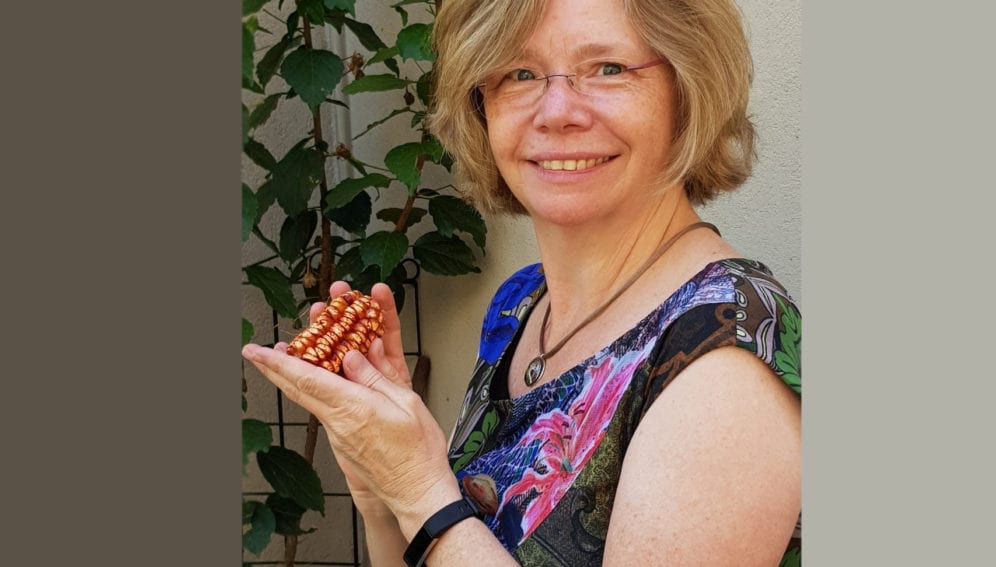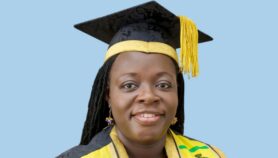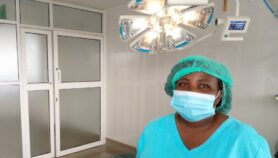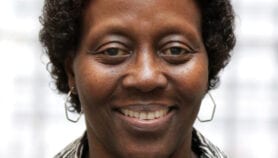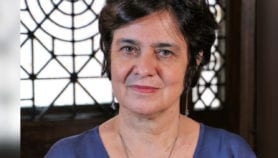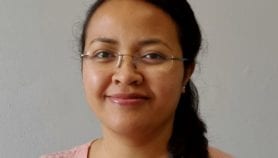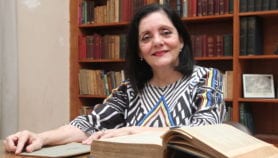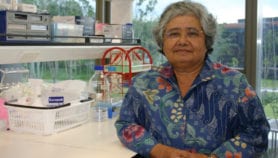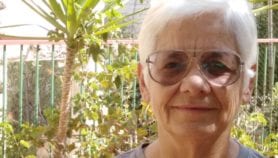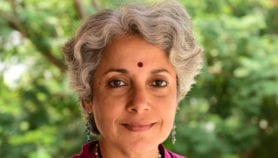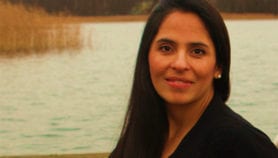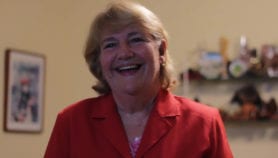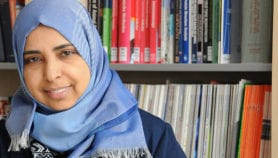By: Fabíola Ortiz
Send to a friend
The details you provide on this page will not be used to send unsolicited email, and will not be sold to a 3rd party. See privacy policy.
[RIO DE JANEIRO] Biologist Marie-Anne van Sluys straddles two areas of interest in her scientific career: understanding of molecular processes for biological diversification, and the interactions between plants and microorganisms.
A member of Brazilian Academy of Science and author of more than 80 scientific papers, she is known for her work on a pioneering project that decoded the first genome of a phytopathogen — an organism that causes disease in plants. van Sluys is also one of three women in an international group tasked with sequencing and categorizing the genome of all eukaryotic species in the next ten years.
She was born in Rio de Janeiro, the eldest daughter in a family of Belgian origin. In this interview with SciDev.Net, she talks about her love for science, work-life balance and the need to keep pushing for a stronger female presence in key positions.
How did you come to decide to pursue a scientific career in the 1980s?
I graduated in Biological Sciences and then successfully completed my doctorate. Like many students, in the beginning I had doubts about what career to pursue. At that moment, it seemed to me that Biological Sciences would offer me higher flexibility. It would give me the opportunity to do field work, to be a researcher and teach.
My choice was not very common at that time. In general, my colleagues chose more traditional careers like medicine, law or engineering. My parents always encouraged me to have a university career and never questioned my decision. I am by nature a curious and observant person.
At that time, were there many barriers in Brazil for a woman in academic life?
My experience has been a little unusual. In my graduating class, most of us were women. This indicates that female presence was already important in the biological sciences at that time. Particularly, microbiology and genetics already had well-known women researchers, and I had the opportunity to interact with strong and determined women. However, the lack of women in leadership positions was notorious.

A gender report published in 2017 reported that 49 per cent of all researchers in Brazil were women. Nevertheless, there are differences by sector. How do you see women‘s participation in biology?
[There is still] a strong female presence that sometimes reaches 50 or even 60 per cent of all students. But while I was coordinator of a molecular sciences course at Sao Paulo University, the female presence remained in the minority. Through the years, we see that the number of women has increased, but in this course it is still at 30 per cent.
In the last years, there have been initiatives to recognise women in science. Are there gender equality policies in funding calls for science projects in Brazil?
Since the 1990s, when I began to participate in different international committees, I’ve seen a concern for promoting female presence in science. I think it is necessary [to have policies to stimulate gender parity]. In Brazil, this concern is more recent. Today, there is a policy that tries to balance the composition of scientific committees. From the candidates' point of view, I personally think that we should first evaluate the merit and scientific quality.
What are the challenges for a woman scientist in Brazil?
There is no doubt that having a family and children is a challenge. We have to search for a balance between academic and family life. I had three children and at the same time, I had to develop [research] projects and give classes. Finding a balance is not easy. Research demands reading and reflection. It is ongoing work that takes up all of one’s time.
You are part of an international consortium where there are only three women among 24 scientists. Is it so hard for women to attain high positions?
We clearly see that there is a higher number of male leadership. Even so, there are increasingly more groups led by women. Several female researchers are leaders today, and they have managed to position themselves thanks to their scientific knowledge.
With changes in the Brazilian government, are you worried about a negative impact for female presence in high positions?
I hope not. My perspective is that women scientists occupy more and more prominent and managerial positions, and there should not be a setback in the progress made since the 1980s. However, there is not much female leadership in agencies that promote science. There is a female presence in [committees that carry out] evaluation of science projects, but still not in key positions.
What message would you give to women interested in getting into the world of science?
I’d say three important words: dedication, perseverance and a lot of patience.
Marie-Anne van Sluys is a scientific coordinator in Fapesp, a SciDev.Net donor
This article has been produced by SciDev.Net's Latin America & Caribbean desk.


